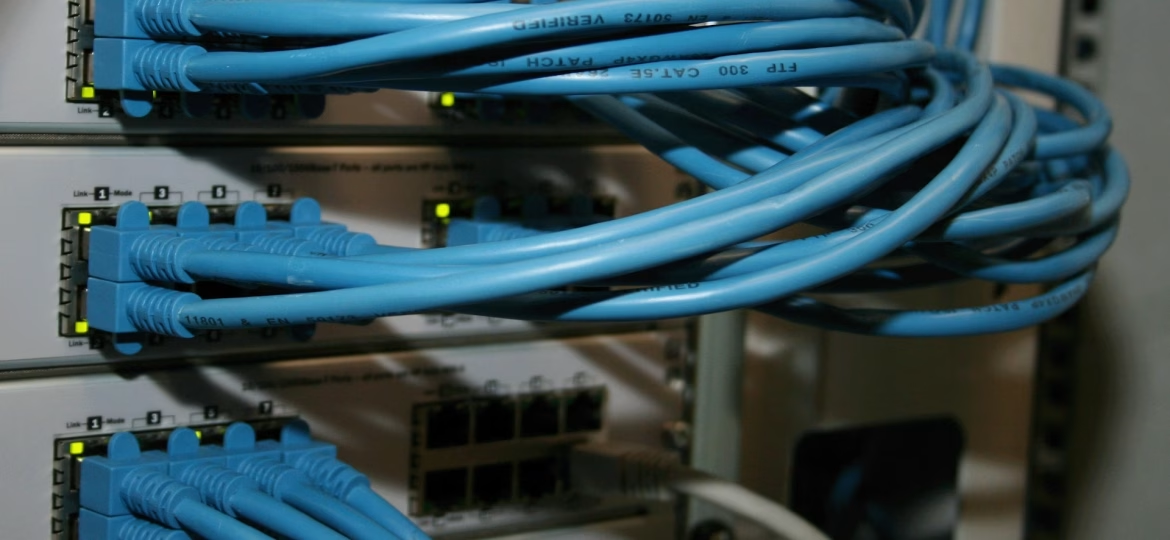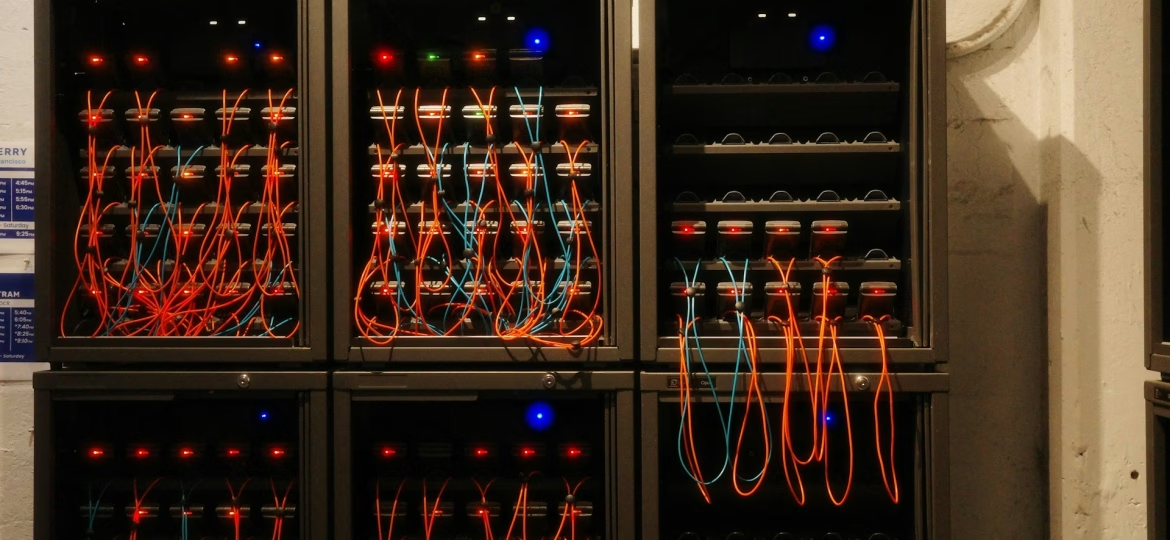Keeping infrastructure stable and running smoothly requires more than just good hardware. Whether you’re running affordable dedicated servers or scaling services using cloud and VPS platforms, the backbone of any system is how well it’s monitored. Server monitoring tools act like silent guards, constantly checking the health of your infrastructure. They help you catch potential issues early before they affect performance or cause downtime.
Without proper monitoring in place, it’s a bit like driving a car with no dashboard. You wouldn’t know if your engine’s overheating or if you’re about to run out of fuel. For modern setups using GPU-dedicated servers, especially those running AI tasks, blind spots like this can lead to serious performance drops. The same goes for platforms managing email hosting, public cloud services, or local data centres. Without visibility, small issues can grow fast. But with the right tools, your team can stay ahead and keep everything running as it should.
Types Of Server Monitoring Tools
Different businesses have different needs, so it makes sense that there are all sorts of server monitoring tools out there. Some take care of the basics like uptime and response times, while others dig deep into CPU loads, memory use, and traffic patterns. Knowing what’s available helps you figure out what your infrastructure actually needs.
Here’s a breakdown of a few common types:
1. Network monitoring tools: These track network traffic, data flow, and connection stability. If users are reporting slowdowns or errors, these tools can help spot the root cause.
2. Application performance monitoring (APM): Focuses on how well your apps are performing, especially under heavy load. This is handy for GPU-dedicated servers handling AI models or training tasks.
3. Log monitoring tools: Keep an eye on your logs in real time. These help track changes, alerts, and unexpected behaviour, making them useful for email hosting services and VPS management.
4. Hardware resource monitors: These shine when monitoring dedicated servers. They track CPU, disk usage, and physical hardware health. Helpful for preventing failures before they happen.
5. Cloud and VPS specific tools: Designed for flexible setups, they allow performance tracking across virtual environments. Ideal for public cloud hosting where resources shift often.
The goal isn’t to grab every tool on the list but to choose the one that matches your setup best. For example, aninfrastructure running dedicated servers in a local data centre might combine hardware and network monitoring to balance performance and security. On the flip side, a small startup using VPS may only need a lightweight tracking tool to keep tabs on bandwidth and memory use. Picking the right mix saves time, lowers stress, and keeps things running without surprises.
Benefits of Using Server Monitoring Tools
Running servers in a data center, especially when using dedicated ones, means speed, compliance, and location all play a role. Having server monitoring tools in place helps maximise the value of this setup. First off, they support uptime standards. UK-based Data Centers benefit from strict data protection laws and secure facilities, but even the most secure setups need reliable monitoring.
When using a dedicated server, monitoring tools can help you spot hardware issues early, trigger cooling measures when needed, and manage power loads more efficiently. They also help simplify audits and tech reviews by keeping records of all activity, which supports businesses in regulated industries.
With public cloud hosting, where resources shift depending on usage, these tools help you make sure your bandwidth or compute limits aren’t being hit suddenly. For VPS users in particular, lightweight monitoring tools provide a way to keep an eye on allocated resources and avoid performance drops.
GPU-dedicated servers demand even more visibility. Tasks like machine learning or large-scale rendering projects can spike usage in seconds. Monitoring tools tuned for GPU metrics help manage loads effectively and avoid throttling or overheating.
Key Features to Look For in Server Monitoring Tools
When choosing server monitoring tools, it helps to know which features actually make a difference day-to-day. While any tool can show you basic metrics, the right ones go deeper and give you the insight you need to stay ahead of issues instead of reacting to them.
Here are some standout features to keep in mind:
1. Real-time activity tracking – So you know exactly what’s happening and when across your infrastructure.
2. Custom alerts – That warn you before systems go down or slow to a crawl.
3. Easy-to-read dashboards – Helping you spot patterns quickly without digging through logs.
4. Historical reporting – Useful for reviewing trends and planning upgrades.
5. Remote access – Especially important for teams managing services remotely or across multiple data centre locations.
6. Integration with other tools – It saves time when you can plug monitoring into your current systems without starting over.
GPU-dedicated servers used for AI or high-load applications need close monitoring of GPU temps, memory usage, and processing queues. And for setups using affordable dedicated servers, having hardware health alerts can prevent costly replacements. For those relying on virtual private servers or public cloud hosting, tracking allocated resources ensures you’re not hitting limits during high-demand periods.
Think of these features as the difference between getting lost in traffic and having live updates that help reroute you in real time. They won’t eliminate every hiccup, but they give you options and a lot more breathing room when something goes off track.
Choosing the Right Server Monitoring Tool for Your Infrastructure
Matching a server monitoring tool to your setup can save time, lower stress, and reduce risk. But with so many tools available, it can feel overwhelming. One good way to approach it is to ask what matters most to the way you work.
Do you run GPU-dedicated servers that manage AI loads? Then GPU monitoring should be front and centre. If your infrastructure includes VPS environments across multiple locations, choose a tool that supports flexible and lightweight agents. For businesses relying on public cloud, check for features that handle elastic resource tracking. Different tools support different use cases, so one size definitely doesn’t fit all.
Location also matters. A reliable dedicated server hosted in a certified data centre comes with its own expectations. Monitoring tools in this setting should support real-time checks on bandwidth, physical hardware, and heat control. That’s not just about preventing downtime. It’s about making sure your hosting environment supports your goals without lagging when things ramp up.
Keep local support and documentation in mind too. The more familiar your team is with the tool, the faster they can respond during peak loads or sudden faults. The fewer delays in diagnosing a slowdown, the better it is for your users.
Try starting with a shortlist of two or three tools based on your core needs. If performance speed is your top priority, rank based on system response visibility. If cost tracking matters more in the early phases, look at tools with strong usage reporting. Testing a few side by side for a few weeks often reveals which suits your setup best.
Mastering Infrastructure Management
Monitoring tools don’t just tell you when a server crashes. They give you the data to keep things from crashing in the first place. Whether you run services on dedicated servers, VPS hosting, or GPU-heavy machines, having the right tools makes everything smoother and more predictable.
When systems are watched properly, problems rarely catch you off guard. You get fewer late-night calls. You avoid sudden outages. The right setup means you spend time improving user experiences instead of fixing fires. Well-chosen monitoring tools pay for themselves through peace of mind and a more reliable infrastructure overall.
With so many options available, configuration and ease of use matter almost as much as performance. The strength of your setup lies not just in fast hardware or smart software, but how clearly you can see what’s happening behind the scenes. It’s a small shift in approach with a massive impact on managing infrastructure the smart way.
If you’re looking to strengthen your infrastructure with better insight and control, a reliable UK dedicated server can give your operations the edge they need. At Binary Racks, we offer high-performance hosting solutions backed by secure data centre facilities, ideal for everything from AI tasks on GPU servers to email and public cloud hosting. Let us help you keep your systems efficient, stable, and ready for whatever comes next.






